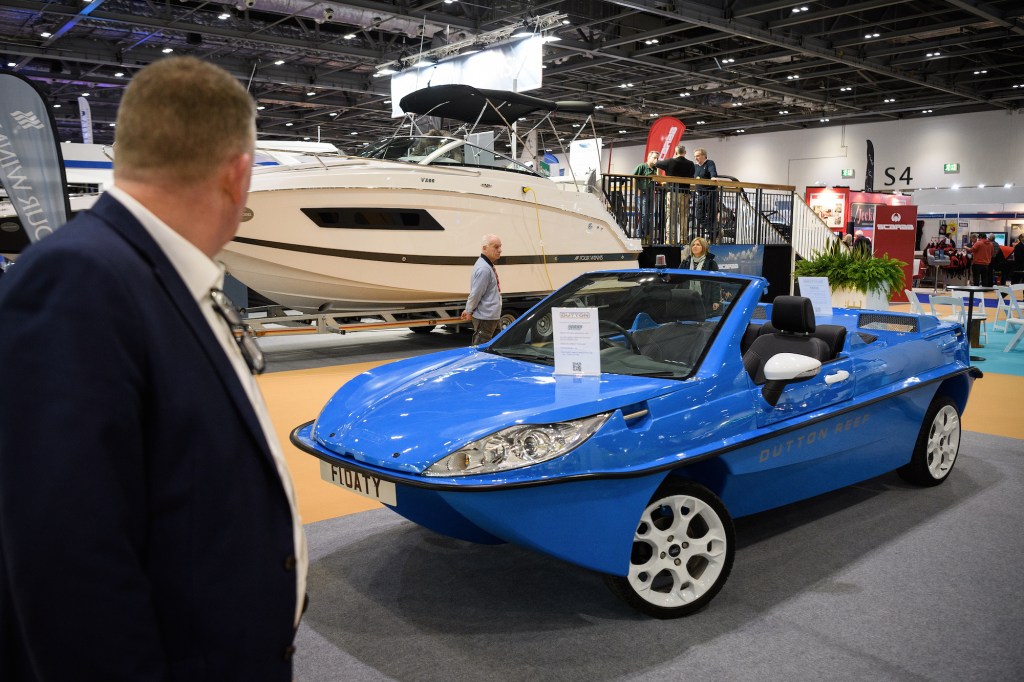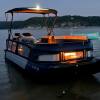
Forget About Flying Cars, What About Amphibious Cars?
We get it: Car shopping can be boring when you’re looking through vast crowds of similar models. Some automakers have been teasing flying cars and hover cars, but they still aren’t available for purchase. In the meantime, you might be better off trying to find an amphibious car.
As you’d expect from its name, an amphibious vehicle can travel on land and water. In addition to cars, there have even been amphibious ATVs and tour buses. So, how did amphibious cars come into being, and can you buy one for yourself?
The history of amphibious cars

Amphibious vehicles have been documented as early as the 1770s, when they were used by royals as carriages. The first motorized amphibious vehicle was a dredging barge built by an American inventor in 1805. Alligator tugs — boats that could pull themselves short distances on land using a winch — would later come in the 1870s.
These examples were few and far between, but amphibious vehicles really started gaining traction in the 1920s. Many drivers used them for recreation or transporting important goods. However, some of these vehicles were also created exclusively as military or search and rescue vehicles.
Amphibious cars became popular around World War II, partially thanks to the Volkswagen Schwimmwagen, ATI reports. It could cross most bodies of water when the driver lowered a screw propeller from the vehicle’s rear deck. It had a top speed of 6 mph on water and 50 mph on land.
The Amphicar, inspired by the Schwimmwagen, is famous for being the most popular amphibious automobile sold to civilians. Produced in the 1960s, the Model 770 could travel 7 knots in the water, a little over 8 mph. It wasn’t as easy to handle as a boat, but it could stay docked for hours without water leakage.
Models you can buy today
Nowadays, manufacturers such as Gibbs make speedier amphibious vehicles like the Aquada. According to Hagerty, it was the first aquatic car to reach over 30 mph on water. This is possible due to its retractable wheel system, which deploys the wheels quickly in water with the press of a button.
WaterCar is another prominent modern amphibious automobile manufacturer. The Panther is one of the brand’s most popular models, with a record-breaking top speed of 60 mph on water. Many drivers also liken it to a Jeep Wrangler because of its distinct fender design and overall utility.
Elon Musk apparently also wants to create a modern amphibious car that can travel underwater. In 2013, he purchased the Wet Nellie, a Lotus Esprit-inspired “amphibicar” that appeared in a James Bond film. The amphibious version of this car was also reportedly the inspiration for the Tesla Cybertruck.
You can even combine ocean cruising with RV living if you can find a “Boaterhome.” It rides on the same chassis as the Ford Econoline van, measuring 36 feet long and equipped with many household amenities. It can also breeze through the water as quickly as 40 mph. Only 21 were ever made, but BoatBlurb reports that a second Boaterhome is in development.
Is it hard to find an amphibious car?
Amphibious vehicles aren’t difficult to locate online, but they can be expensive. According to WaterCar, a custom-made Panther can be purchased for $198,000. Another amphibious vehicle, the Gibbs Humdinga amphitruck, retails for $500,000.
One of the most expensive amphibious automobiles is the Terra Wind RV, priced at more than $1 million. Older vehicles, like the original Amphicar, are also relatively scarce, especially in good condition.
Fortunately, amphibious ATVs are as capable in water and vastly more affordable. Gibbs sells the Quadski and its XL variant for around $40,000.


